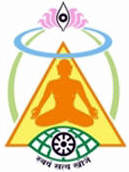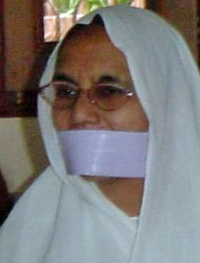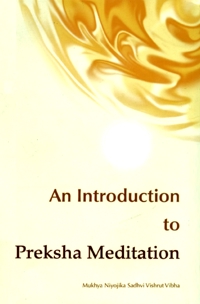
Antaryatra
There exists two worlds-the external and the inner world. The human consciousness has a natural tendency to incline towards the external world. This is because the sense are continually in touch with the external world. The eyes analyse physical beauty, the ears receive and respond to the sound waves, the nose identifies various smells, the tongue relishes different kinds of flavours and the skin gives the sense of touch. Similarly, the mind is conditioned and acclimatized with the impressions of the external world. In contrast, the inner world often remains unexplored because we are not acquainted with the powers that assist us in realization of the true beauty of it. In Preksha Meditation, there is a technique named Antaryatra through which one can become familiar with the inner world and realise oneself.
Objectives
The objectives of Antaryatra are:
- To initiate upward movement of vital energy. The mind moves from shakti kendra (the center of energy) towards the gyan kendra (the center of knowledge)
- To cultivate the power of self restraint
- To boost the vital energy
- To create a strong platform for meditation
The flow of consciousness in the central nervous system (CNS) is called the internal trip. The human nervous system comprises three sub-systems:
- Parasympathetic nervous system (ida)
- Sympathetic nervous system (pingla)
- Central nervous system (sushumna)
The outward flow of Vital energy' is facilitated by the parasympathetic and sympathetic nervous systems. In terms of Hatha yoga, these are synonyms for ida and pingla, respectively. For the inward flow, the consciousness must travel from ida and pingla towards the sushumna or the spinal cord.
Technique
In order to visit the inner world by undertaking the internal trip, one must withdraw ones attention from all the external objects and focus on the center of vital energy, situated at the base of the backbone or the vertebral column. Let the consciousness flow through the spinal cord all the way from the center of vital energy up to the center of knowledge situated in the middle of the skull.
We can understand this process through an example. Consider a well with water. A man passes by and wants to fill a drum of water. He cannot reach the water below directly, so he makes use of a rope, ties a bucket with the rope. The bucket is lowered into the well, filled with water and then pulled out. By repeatedly filling and emptying the bucket, he can fetch desired quantity of water. Similarly, our consciousness takes the shape of a bucket and the breath of the rope for the transport of the vital energy from the center of vital energy all the way to the center of knowledge and vice versa. Synchronize ones internal trip with the process of breathing. During exhalation, one should undertake the upward trip. Where as, during the inhalation one should undertake the downward trip. While practicing internal trip, it is essential to remain in the state of deep concentration.
Benefits
- Promotes physical well being by strengthening the nervous system
- Promotes mental well being by revitalization of the mental abilities
- Promotes emotional well being by establishment of sustainable control over emotions
- Promotes spiritual well being by establishment of efficient flow of pran, the vital energy
- Sustained practice helps the practitioner to over come the anxiety and frustration of everyday life and assist in the awakening of super natural powers
Conclusion
Internal trip guides us to the unexplored zones of our body, the tremendous source of positive energy hidden within us. It also strengthens the spiritual side of our life.
 Sadhvi Vishrut Vibha
Sadhvi Vishrut Vibha

